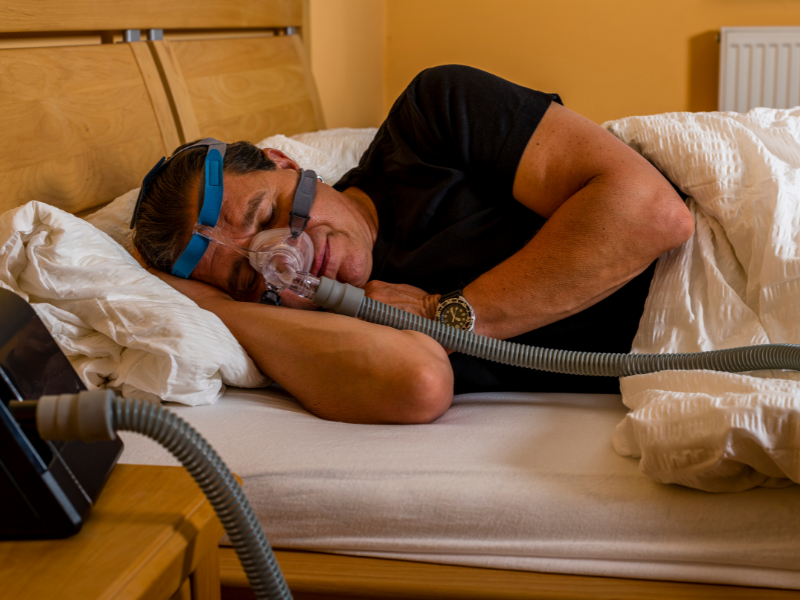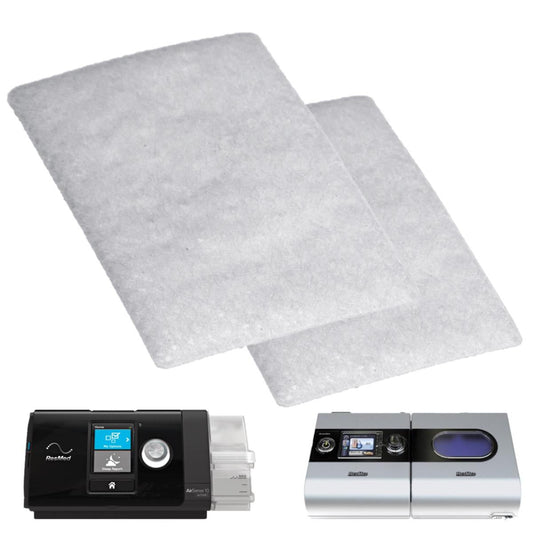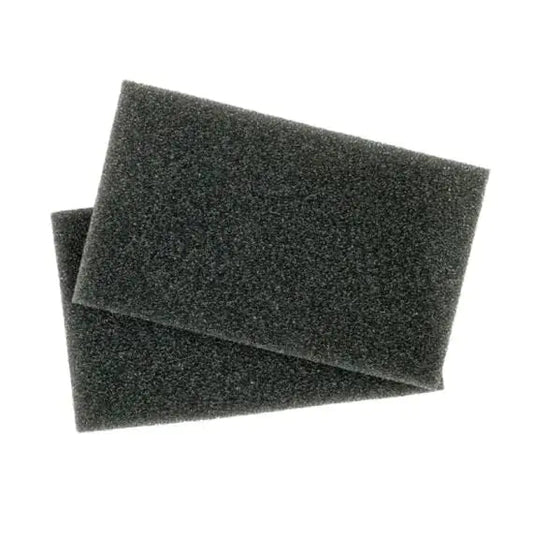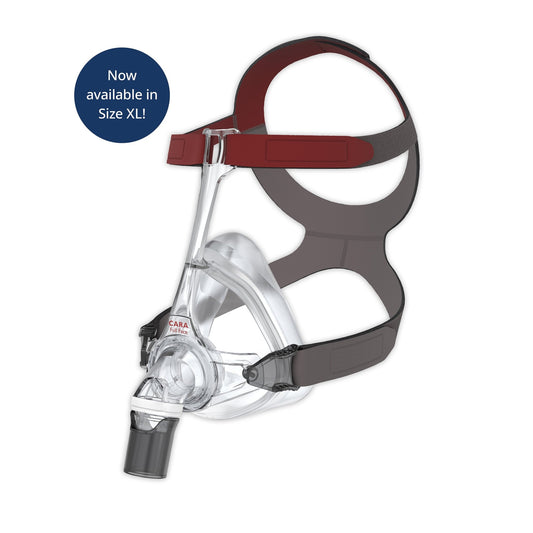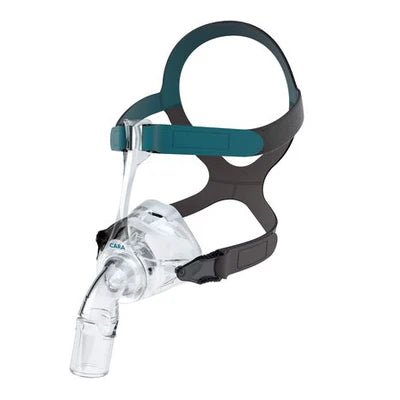Noise Level
The ResMed AirSense is known for its quiet operation, with a noise level of around 27dBa. This is comparable to a soft whisper or a gentle hum.
Portability
The ResMed AirSense™ 10/11, a CPAP device equipped with new technology designed to make starting therapy, acclimating and adhering to it easier and more convenient for your patients. The AirSense devices are compact and have a built-in humidification chamber that allows for easy portability.
Humidification
To access the Climate Control Manual mode, users can follow these steps from the machine's Home screen: Select "My Options," then choose "Climate Ctrl." Change the default setting from "Auto" to "Manual." Next, select "Humidity Level" and adjust the dial to set the desired humidity level (ranging from 1 to 8, with the default setting at 4). Similarly, choose "Tube Temp" and turn the dial to select the most comfortable temperature for the ClimateLine/ClimateLineAir heated tube (with a range of 60–86⁰F, defaulting to 81⁰F). For more detailed instructions, refer to the ClimateLineAir user guide.
For S9 users, the Climate Control Manual setting must be activated by their equipment supplier. From the Home screen, to adjust humidity, turn the dial to highlight the water drop icon; push the dial, turning the background yellow. Then, turn the dial to set the humidity level (ranging from 1 to 6, with the default setting at 3). Push the dial once more to confirm the new humidity level. To set the tube temperature, turn the dial to highlight the thermometer icon; push the dial to turn the background yellow. Then, turn the dial to select the desired ClimateLine/ClimateLineAir tube temperature (ranging from 60–86⁰F, defaulting to 80⁰F). Push the dial again to confirm the new temperature.
Determining when to adjust humidity versus temperature is a key consideration. Many patients find cooler air more comfortable for sleeping, particularly new CPAP users, those using a full face CPAP mask, and women experiencing hot flashes at bedtime. However, warmer air provides optimal humidity and reduces nasal irritation. Increasing humidity can be beneficial if dry air leads to waking up with a dry mouth, a common concern for 40% of CPAP users. Gradually adjusting humidity and temperature levels can be done one notch at a time. If maximum levels are reached and dryness persists, consulting with the equipment supplier and doctor about potential causes, such as mask leak or medications, is advisable. Additionally, checking for mask leaks if the humidifier's water chamber is consistently empty is recommended.
If dryness persists despite increased humidity, consider a slight rise in tube temperature (1–2⁰F) to assess comfort levels. Empowering patients to make these real-time adjustments offers peace of mind to many and promotes better sleep therapy. As always, consulting with a doctor or equipment supplier before modifying treatment settings is essential.
Cleaning
Cleaning your ResMed AirSense CPAP device and its components is an important part of regular maintenance to ensure it functions optimally and to prevent any potential health issues. Here are steps you can follow to clean your ResMed AirSense CPAP device:
Wash Your Hands:
Before starting, make sure to wash your hands thoroughly with soap and water to ensure cleanliness. Power Off and Unplug: Turn off the AirSense device and unplug it from the power source.
Disassemble the Components:
Remove the water chamber, mask, and tubing from the device.Take apart the mask if it is a full face or nasal mask. Follow the manufacturer's instructions for proper disassembly.
Clean the Mask:
If you have a cloth mask cushion, wash it with mild soap and warm water. Rinse thoroughly and allow it to air dry. If you have a silicone cushion, you can wash it in warm soapy water and rinse it thoroughly. Make sure to check the manufacturer's recommendations for your specific mask.
Clean the Water Chamber:
Disassemble the water chamber if it comes apart. Wash it with warm, soapy water. Rinse thoroughly and allow it to air dry. Avoid using strong chemicals or abrasive materials, as they can damage the chamber.
Clean the Tubing:
Wash the tubing in warm soapy water. You can use a tube brush or a gentle cloth to clean the inside. Rinse thoroughly and allow it to air dry.
Clean the Humidifier Base (if applicable):
If your AirSense device has a separate humidifier base, clean it using warm soapy water. Rinse thoroughly and allow it to air dry.
Wipe Down the Device:
Use a clean, damp cloth to wipe down the exterior of the AirSense device. Do not submerge the device in water or use any cleaning solutions that may damage the electronics.
Inspect for Wear and Tear:
While cleaning, check for any signs of wear, cracks, or deterioration in the components. If you notice any damage, consider replacing the affected parts.
Reassemble:
Once all the components are clean and dry, reassemble the mask, tubing, and water chamber.
Replace Disposable Parts:
If you're using disposable filters or other components, make sure to replace them according to the manufacturer's recommendations.
Perform Regular Maintenance: In addition to regular cleaning, be sure to follow the manufacturer's guidelines for routine maintenance, including filter replacement and other recommended tasks.
Remember to consult the specific user manual that came with your ResMed AirSense device, as it may have unique instructions or recommendations for cleaning and maintenance. Following these steps will help ensure your CPAP device continues to work effectively and is free from any potential contaminants.
Featured CPAP Machines
-
Lowenstein AirFilter, 2-pack
Regular price $14.00Regular priceUnit price per -
Lowenstein CARA Full Face Mask
Regular price $299.00Regular priceUnit price per -
Lowenstein CARA Nasal Mask
Regular price $225.00Regular priceUnit price per

